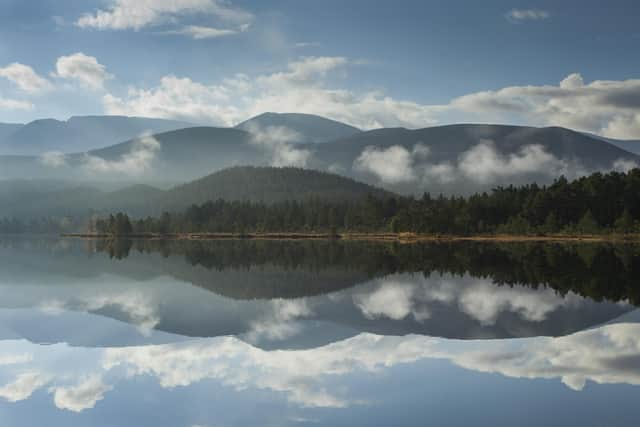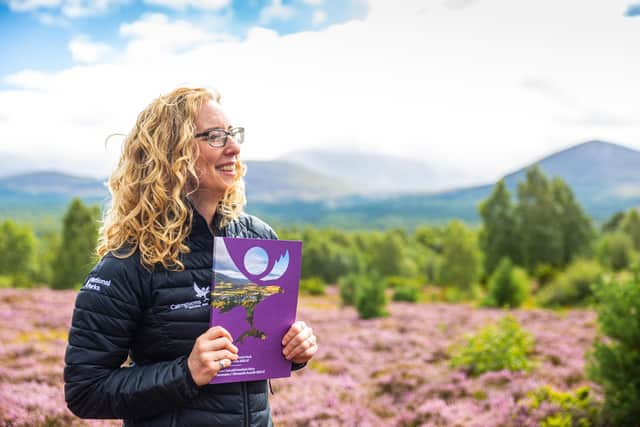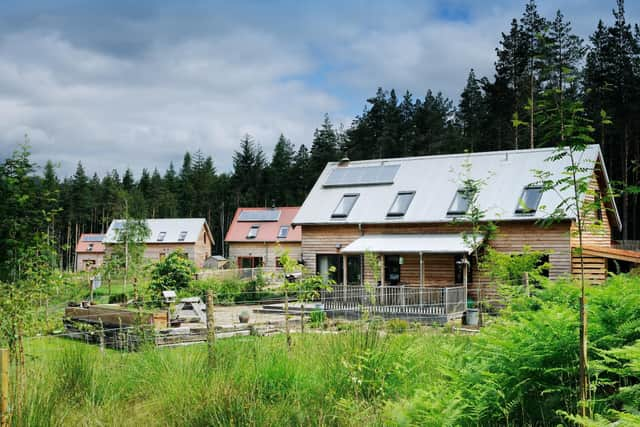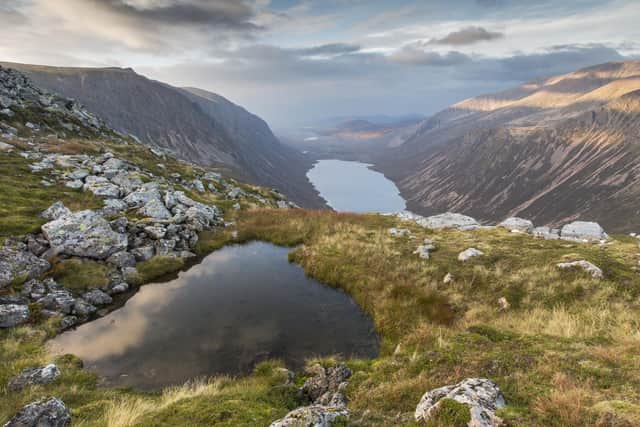New climate-friendly vision for Cairngorms to clamp down on holiday lets and focus on nature restoration
The new partnership plan includes a mission to reduce the percentage of second homes, vacant houses and short-term holiday letting properties and to provide more affordable housing, part of a bid to encourage more workers and youngsters to remain in the area.
Other aims include lowering climate emissions to net zero well before the 2045 national target date, restoring at least 38,000 hectares of peatland, planting new woodlands and making travel around the region easier for walkers, cyclists and wheelchair users.
Advertisement
Hide AdAdvertisement
Hide AdIt also sets out intentions to create a Cairngorms Nature Atlas, reduce deer numbers to protect local landscapes and investigate the impacts of releasing game birds bred for sport into the wild and the practice of muir burning.
Created after a public consultation that saw more than 1,500 responses, the 2022-2027 plan has been formally launched in Boat of Garten by Scottish Greens MSP and green skills, circular economy and biodiversity minister Lorna Slater.
It sets out the key priorities for Cairngorms National Park – the UK’s largest and home to nearly a quarter of all the nation's rare and endangered species.
It covers all areas of life and work – from conservation to land management, local communities and the economy to tourism and recreation, with the intention to create a “wellbeing economy that puts the health of people and planet first”.


Access to housing is a major difficulty for people who live and work in the Cairngorms region, which includes tourist hotspots such as Aviemore.
The plan aims to increase provision of affordable homes and essential accommodation for workers and young people, as well as addressing the needs of ageing residents, those facing economic hardship, people with disabilities, ethnic minorities and LGBTQ+ communities.
Under the new vision, a maximum of 15 per cent of all housing stock within the national park will be second homes, vacant or short-term letting properties by 2040.
Control areas and licensing for holiday rentals will also be introduced.


Advertisement
Hide AdAdvertisement
Hide AdMs Slater said: “Our national parks are amazing places to live and visit and are home to some of Scotland’s finest landscapes and wildlife.
“They do essential work to restore our natural environment, tackle the climate crisis, help manage facilities for visitors, promote responsible access and develop sustainable communities.
“The Cairngorms National Park is the largest in the UK and is well placed to become an exemplar in nature restoration, cutting climate emissions from restoring forests and peatlands, and helping Scotland meet its climate targets as part of a just transition.


“The new park plan breaks new ground in its ambition to improve the park and deliver for the environment and is based on listening to and involving communities in the Cairngorms.”
Xander McDade, convener at Cairngorms National Park Authority (CNPA), said: “This is the largest, most ambitious partnership plan ever created – with major activity including peatland and woodland restoration, affordable housing, green skills and a wellbeing economy – and represents a vision for what the national park could look like by 2027, and indeed by 2045, when Scotland aims to have achieved net zero.”
The park’s Heritage Horizons initiative, which includes 24 long-term projects, will play a key role in delivering the plan’s objectives, he said, “bringing about transformational change, benefitting people’s health and wellbeing, delivering on climate change and enhancing nature” across the area.
“Continuing with the status quo is not an option,” he said, insisting the park should be “at the forefront of doing things differently”.
Mr McDade added: “With the help of our communities and more than 100 partner organisations, people and nature will thrive together in the Cairngorms National Park, both now and in the future.”
Advertisement
Hide AdAdvertisement
Hide AdLandowners have welcomed the new plan, but warn regulations must be “streamlined” to speed up provision of new homes.


Stephen Young, head of policy at membership organisation Scottish Land & Estates, said: “Land managers are crucial to the success of the partnership plan over the next five years. Our members live and work within the park and will continue to work to ensure there are thriving communities.
“We are fully supportive of the focus on increasing affordable housing stock, which will play a huge role in supporting individuals and families to live and work within the park boundaries.
“However, the CNPA will need to ensure that the park’s planning process is streamlined to ensure that new housing development proposals are not delayed or become unfeasible.
“A report commissioned by the Scottish Land Commission in 2020 found that convoluted planning systems and high development costs played a far more significant role in preventing the development of new houses than the often-suggested issue of landowners withholding developable land.”
The economics of development in rural areas of Scotland such as the Cairngorms National Park can often be challenging, he said, with insufficient value in completed homes to accommodate some of the costs that are driven by local authority planning and technical conditions.
Mr Young said: “Recognising this at a local level would act to transform viability in a number of projects and thereby remove some of the key barriers to development that are in the public sector’s control whilst smoothing the whole land acquisition process.
“Going forward, it will be vital that the development system within the Cairngorms National Park is seen by potential developers as being welcoming and not overly restrictive.
Advertisement
Hide AdAdvertisement
Hide Ad“Our members within the park are keen to work with the to deliver these objectives.”
Cairngorms is one of just two national parks in Scotland, the other being Loch Lomond and Trossachs.
The Scottish Government has committed to establishing at least one new national park by 2026, with a number of areas under consideration.
Comments
Want to join the conversation? Please or to comment on this article.
